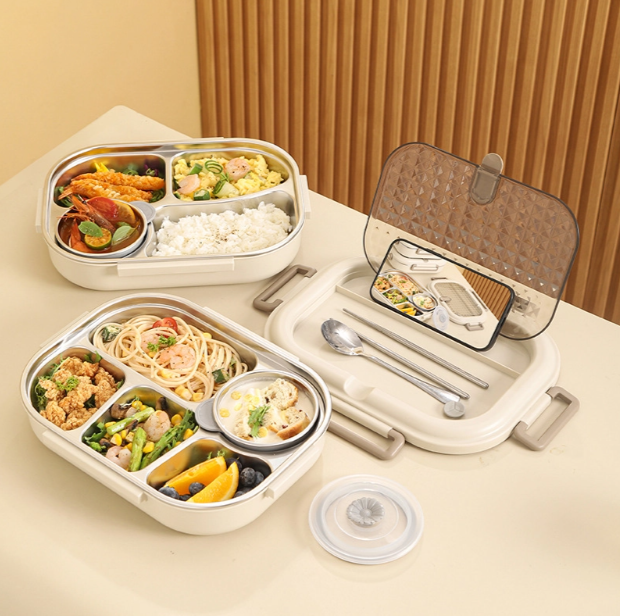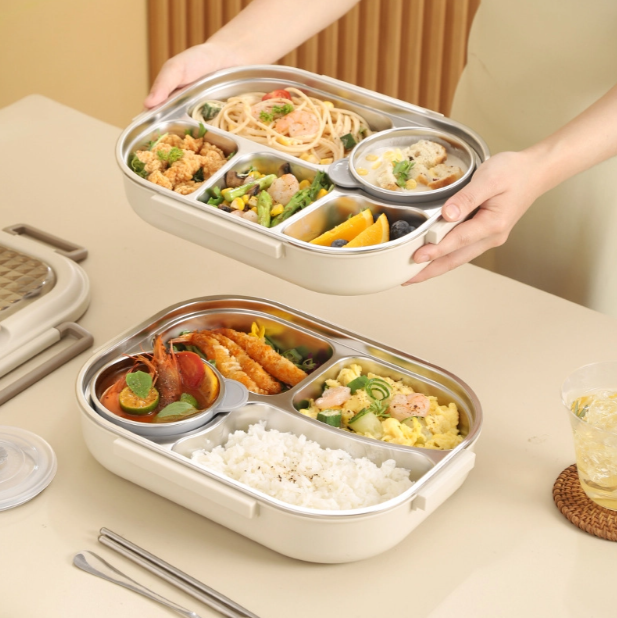
The bento lunch box is more than just a meal—it's an art form. Have you ever wondered why it's so popular in Japan? A single-portion, neatly packed meal, the bento is beloved for its convenience and balanced nutrition.
In this article, we’ll explore the history, components, and cultural significance of the bento lunch box. You’ll also learn how to make your own at home!
The Origins and History of the Bento Box
Early Beginnings of the Bento Box
The history of the bento lunch box traces back over a thousand years. It first appeared during the Kamakura period (1185-1333) when travelers, soldiers, and workers packed simple meals for convenience. These early bento were often made with dried rice (hoshi-ii), a portable food that could be boiled on demand, providing sustenance during long journeys or battles.
Cultural Significance and Transformation
As bento boxes evolved, they became a staple of Japanese society, especially during the Edo period (1603-1868). By then, bento had evolved from a simple convenience food to an art form, especially during outdoor events like cherry blossom viewing (hanami). The process of preparing and packing bento became symbolic of care, family bonding, and attention to detail. Over time, the box design and food content grew more elaborate, incorporating artistic elements alongside nutritional balance.
Modern-Day Bento Boxes
In modern Japan, bento lunch boxes are commercially available in convenience stores, train stations, and supermarkets. Ready-made bento, like the ekiben (train station bento), offers a quick, affordable meal for busy workers and travelers. However, the tradition of homemade bento remains strong, with many Japanese parents preparing these lunches for their children and spouses, showcasing love and care through their thoughtful designs.
Components of a Traditional Japanese Bento
Essential Ingredients in a Bento Box
A traditional bento lunch box typically includes several essential components:
Rice or noodles – These are the starchy base of the meal, providing essential carbohydrates. Varieties like hakumai (steamed white rice), genmai (brown rice), and sekihan (rice cooked with red beans) are common.
Protein – This could be fish, meat, or eggs. Grilled fish, tonkatsu (breaded pork), or yakitori (skewered chicken) are popular choices.
Vegetables – Pickled or cooked vegetables like edamame, carrots, or broccoli add essential vitamins and minerals to the meal.
The Art of Balance in a Bento
A key principle in creating a balanced bento lunch box is the concept of "Ichi-Juu-San-Sai"—one soup, three sides. This concept ensures that the meal has a variety of textures and flavors, with a balance between carbohydrates, proteins, and vegetables. In a traditional bento, each component is carefully arranged to create harmony, both in taste and appearance.
Popular Foods Found in a Bento Box
While bento box contents can vary widely depending on personal preferences, some staple foods include:
Tamagoyaki | A sweet, Japanese rolled omelette. |
Umeboshi | Pickled Japanese plums |
Nimono | Simmered meat, fish, or vegetables. |
These foods are often paired with seasonal ingredients, allowing for a fresh and balanced meal that is both filling and visually appealing.
Types of Bento Boxes
Classic Bento Styles
Hinomaru Bento and Makunouchi Bento are two classic types of bento. Hinomaru Bento consists of plain rice with a pickled umeboshi plum at the center, representing the sun. Makunouchi Bento is typically divided into two sections—one for rice and the other for various side dishes, such as fish, meat, or vegetables.
Creative Bento Forms
For children, Kyaraben (character bento) is popular. These bento boxes are designed with ingredients shaped to resemble characters from anime, games, or movies, making the meals more fun and appealing. This creative approach encourages kids to eat healthier foods by presenting them in a fun and engaging way.
Special Occasion Bentos
Jubako, used during New Year’s celebrations, are a more elaborate form of bento, often stacked in multiple layers. Koraku Bento is typically prepared for outdoor activities like picnics, where families gather to enjoy meals in the beauty of nature.
Tips: Offering themed or customized bento boxes (such as Kyaraben) for children could help attract families looking for creative and nutritious meal options.
The Bento Box in Contemporary Life
Bento as a Symbol of Japanese Family Values
The bento lunch box is deeply tied to Japanese family values. Parents, particularly mothers, prepare bento for their children and spouses, showing affection through the care and thoughtfulness involved in the meal's preparation. It's a reflection of the importance of family and community in Japanese culture.
Bento in Modern Workplaces and Schools
Today, bento boxes are a common sight in both school cafeterias and workplaces. In schools, bento boxes are often packed by parents, while workers might buy pre-made bento from convenience stores or ekiben shops. Bento boxes offer a convenient, nutritious, and affordable lunch option for busy individuals.
Environmental Impact and Sustainability of Bento Boxes
As awareness of environmental issues grows, there has been a shift towards reusable bento boxes made from eco-friendly materials. The move away from disposable plastic containers has helped reduce waste, making the bento box an increasingly sustainable choice for lunch.

How to Make Your Own Bento Box
Selecting the Right Bento Box
When selecting a bento lunch box, consider the material that best suits your needs. Wooden bento boxes are traditional and beautiful, while plastic and metal boxes are more modern and practical, especially if you're looking for something microwavable or dishwasher-safe. The size and compartments of the box should match the variety and amount of food you intend to pack.
Crafting a Balanced Meal
To craft a balanced bento, follow the 4-3-2-1 rule: 40% carbohydrates (rice or noodles), 30% protein (meat or fish), 20% vegetables, and 10% pickled items or dessert. Ensure that your ingredients are fresh, and keep wet ingredients separate from dry ones to maintain the integrity of the meal during transport.
Creative Tips for Making Bento Fun
Bento-making is an art form. Use food dividers to separate ingredients, and get creative with mini-skewers and cookie cutters to shape food into fun designs. Remember, the visual appeal is just as important as the taste in a traditional bento.
Conclusion
The bento lunch box is more than just a meal container—it's a reflection of Japanese culture, offering a balanced, nutritious, and aesthetically pleasing way to enjoy food. Whether you’re purchasing one from a convenience store or preparing it at home, the bento box remains a vital part of daily life in Japan. Its continued popularity around the world demonstrates its versatility and enduring appeal. Bento boxes are a fantastic solution for people looking for convenient, healthy, and creative lunch options. By embracing the principles of balance, beauty, and sustainability, the bento lunch box can provide an enjoyable and nutritious eating experience.
BINSLY offers a variety of bento boxes that prioritize sustainability and convenience. Their BPA-free, leak-proof stainless steel lunch boxes with separate soup bowls make for the perfect solution for those looking for an eco-friendly and functional lunch option.
FAQ
Q: What is a bento lunch box?
A: A bento lunch box is a Japanese single-portion meal container, typically filled with rice, protein, and vegetables, offering a balanced, convenient, and aesthetically pleasing meal.
Q: How do you pack a bento lunch box?
A: To pack a bento lunch box, include a combination of rice or noodles, protein like meat or fish, and vegetables. Ensure each item is neatly separated using dividers to maintain freshness.
Q: Why are bento lunch boxes popular in Japan?
A: Bento lunch boxes are popular in Japan due to their convenience, nutritional balance, and the cultural significance of carefully preparing meals for loved ones.
Q: Can I use a bento lunch box for hot foods?
A: Yes, many bento lunch boxes are designed to keep hot foods warm. Consider using a thermal bento box or one with separate compartments to prevent leakage and maintain temperature.
Q: What materials are bento lunch boxes made from?
A: Bento lunch boxes can be made from plastic, metal, or wood, with each material offering different benefits in terms of durability, aesthetic appeal, and ease of use.



















